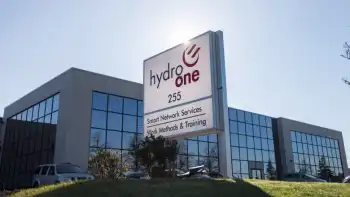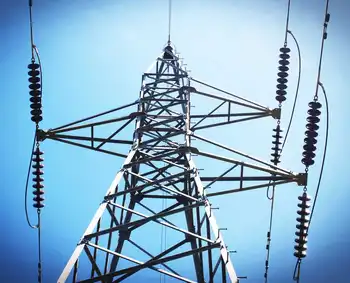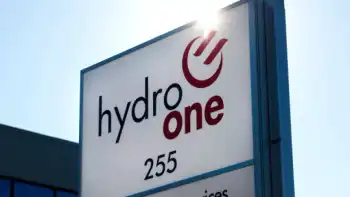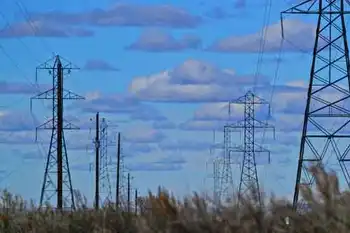U.S. concerned over ChinaÂ’s wind push
PIPESTONE, MINNESOTA - Finishing the 20-story climb up a ladder inside a wind-turbine tower, Scott Rowland opened the top hatch to reveal a panorama of flat farmland dotted with dozens of other turbines.
Two of the closest, like the tower he was standing on here, were built by Goldwind USA, where Mr. Rowland is vice president for engineering. “These are very sophisticated machines,” he said.
They are also the only three Chinese-made wind turbines operating in the United States.
That could soon change, though, as Goldwind and other Chinese-owned companies plan a big push into the American wind power market in coming months.
While proponents say the Chinese manufacturers should be welcomed as an engine for creating more green jobs and speeding the adoption of renewable energy in this country, others see a threat to workers and profits in the still-embryonic American wind industry.
“We cannot sit idly by while China races to the forefront of clean energy production at the expense of U.S. manufacturing,” Senator Sherrod Brown, an Ohio Democrat, said during a debate this year over federal subsidies for wind energy.
Such sentiments help explain why Goldwind is putting a distinctly American face on its efforts — and is diligently highlighting plans to do more than simply import low-cost equipment from China.
“Goldwind was approaching this as, ‘We’re going to build an organic, North American organization,’” said Mr. Rowland, a Texas native and former engineer at the Boston-based wind farm developer First Wind. “So the opportunity to work with them — and with folks I’ve known for a long time — was really attractive.”
By entering the United States, the Chinese industry is coming to a world leader in wind energy capacity: roughly 41 gigawatts, or enough to power the equivalent of 10 million American homes. Only China itself, which recently passed American output, generates more wind power — 43 gigawatts — although that is spread over a population more than four times the size of the population of the United States.
But American wind output still meets only a small portion of the nation’s overall demand for electricity — about 2 percent — compared with countries like Spain, which gets about 14 percent of its electrical power from the wind.
And the tepid United States economy, rock-bottom natural gas prices and lingering questions about federal wind energy policy have stalled the American wind industry, which currently represents only about 85,000 jobs. Even the American market leader, General Electric, reported a sharp drop in third-quarter turbine sales, compared with the same period last year.
All of which might indicate that dim market prospects await the wave of wind-turbine makers from China. But the Chinese companies can play a patient game because they have big backing from China’s government in the form of low-interest loans and other blandishments — too much help, in the critics’ view.
Even now, the United States wind energy industry is by no means an all-American business. After GE, the current market leaders in this country are Vestas of Denmark, Siemens of Germany, Mitsubishi of Japan and Suzlon of India. None of the governments of those countries, though, are suspected of unfairly favoring their home industries and discriminating against foreign competitors on anything approaching ChinaÂ’s scale.
In the case of China, the Obama administration is investigating whether the Chinese may have violated World Trade Organization rules in subsidizing its clean-energy industry.
Mr. RowlandÂ’s company, Goldwind, is the fledgling American arm of a state-owned Chinese company that has emerged as the worldÂ’s fifth-largest turbine maker: the Xinjiang Goldwind Science and Technology Company.
To help finance its overseas efforts, Xinjiang Goldwind raised nearly $1 billion in an initial public stock offering in Hong Kong in October — on top of a $6 billion low-interest loan agreement in May from the government-owned China Development Bank.
Goldwind, which set up a sales office in Chicago, has hired about a dozen executives, engineers and other employees so far. Most, like Mr. Rowland, are Americans already experienced in the wind energy field.
That includes Tim Rosenzweig, the companyÂ’s newly installed chief executive and the former chief financial officer of First Wind, who sees parallels with the resistance Japanese carmakers met when they set up operations in the American auto market in the 1980s.
“In terms of a business school case study, you definitely think of that, and I think that decisions around eventually putting manufacturing here solved part of that equation,” Mr. Rosenzweig said. “So our goals of localizing and creating jobs here and investing in the U.S. — all that is part of the equation.”
Goldwind executives and their Chinese bosses no doubt learned from the uproar generated late last year when a Chinese energy conglomerate, A-Power Energy Generation Systems, joined an American investment firm and a Texas developer, Cielo Wind Power, to announce plans for a $1.5 billion wind farm, using 240 to 300 turbines, in West Texas.
Critics argued that the project — which was eligible for about $450 million in federal stimulus funding set aside by the Obama administration for renewable energy projects — would support thousands of manufacturing jobs in China, while creating only a few hundred less valuable construction and maintenance jobs in the United States.
Hoping to mute the jobs controversy, A-Power and its parent company, Shenyang Power Group, brokered a deal last August with the United Steelworkers union. The deal is meant to ensure that major components for the planned Texas wind farm — including the towers, some enclosures for the turbine and the giant turbine blades — would be supplied from the United States.
The Chinese companies also said they expected to buy as much as 50,000 tons of steel from American mills to build the Texas project, and A-Power and its partners announced plans to eventually open a manufacturing plant in Nevada.
Still, some skeptics say the Chinese manufacturers are too new to wind energy to warrant investing in their equipment for wind farms intended to operate for decades.
Wind turbines made by Chinese manufacturers sell for an average of $600,000 a megawatt, compared with $800,000 or more for Western models made from Chinese parts, and even higher prices for European and American machines. Yet, Western banks have been leery of lending wind farms money to buy the Chinese equipment because of concerns about its reliability, according to Robert Todd, the Hong Kong-based director of the renewable energy, resources and energy group at HSBC.
But with the American wind industry in the doldrums, there are few other big investments pending. The American Wind Energy Association estimates that this year only 5,500 megawatts of new capacity has been added in the United States. That is only about half of last year’s total — and far less than the 17,600 megawatts, or more, being installed this year in China, which has provided more subsidies and set more renewable energy targets for its utilities.
Proponents of the Chinese push say the availability of inexpensive turbines from China — and ample customer financing from its state-owned banks — could help put wind energy back on a growth track by making it more affordable for American utilities and developers.
“Wind power in the United States is in a disordered phase because of a lack of funds,” said Andrew Hang Chen, the president of Usfor Energy, a consulting firm in Pittsburgh that advises the Chinese government and its state-controlled wind energy companies. “It’s a very good opportunity for Chinese businesses to access the U.S. market.”
But Steve Trenholm, the chief executive for North American operations at a big wind farm developer, E.On Climate and Renewables, said his company still leaned toward staying with Western multinationals, most of which have set up at least limited manufacturing facilities in the United States.
Especially when federal grant money is involved, he said, “there is a strong preference to tie it to U.S. manufacturing.”
Already, though, much of the manufacturing for American wind energy is done offshore, with the big European developers importing some of the most sophisticated and valuable turbine components from factories overseas. Even GE now buys gearboxes from China to install in turbines that it assembles in the United States. The American Wind Energy Association has estimated that about 50 percent of a typical wind turbine being erected today in the United States is imported.
But the Chinese companies probably know they will be judged by a different standard.
When Goldwind USAÂ’s chief, Mr. Rosenzweig, visited the companyÂ’s three pilot turbines here in Minnesota last month, accompanied by Mr. Rowland and the companyÂ’s spokesman, Colin Mahoney, they detailed the American-made bona fides of their machines.
The towers, they said, were built by SMI & Hydraulics, a metal fabricator in nearby Porter, Minn. American contractors in Big Lake, Minn., and Gary, S.D., were used to transport the equipment, lay the foundation and install the turbines.
The fiberglass blades came from a plant in South Dakota — albeit one owned by the Danish firm LM Wind Power. The company is also in discussion for future projects with other American tower makers, Mr. Mahoney said.
He estimated that $6.2 million of the Minnesota pilot project’s cost of nearly $10 million went to American manpower and components. But the real guts of the Goldwind machines — the generators, hubs and nacelles, or turbine housings — were built in China.
Mr. Rosenzweig said his team was looking at ways to move more of that work to American shores.
“There’s an economic proposition to actually have American workers here doing the assembling of the hubs and nacelles, and maybe generators down the road,” Mr. Rosenzweig said. “We’ve been approached by a number of states and their economic development teams,” he said. “So we’re getting there.”
But with the Chinese market starting to level off even though Chinese factory capacity keeps surging, Goldwind and other Chinese companies will still have a powerful financial incentive to avoid idling new assembly lines in China. And labor is much cheaper in China — $300 a month for blue-collar workers and $500 a month for engineers. Workers and engineers in the United States could expect to make at least 10 times as much.
Nonetheless, GoldwindÂ’s team sees plenty of room for American jobs.
Joining the Goldwind executives here for the tower tour was James P. Mikel, the head of Renew Energy Maintenance, a small firm based in Brandon, S.D., that has signed a long-term deal with Goldwind to handle upkeep of the turbines.
Mr. Mikel said he was initially wary of working with an unknown Chinese wind company. But he said a visit last spring to Goldwind’s operations in Beijing — and the prospect of expanding employment at home — changed his mind. After all, the Chinese companies are the ones with the money to spend on the American wind industry right now.
“I was concerned at first,” Mr. Mikel said. “But I live here, and these turbines mean more jobs. Five years from now, we’ll look back and wonder what all this concern was about.”
Related News

Hydro One stock has too much political risk to recommend, Industrial Alliance says
TORONTO - A seemingly positive development for Hydro One is overshadowed by ongoing political and regulatory risk, Industrial Alliance Securities analyst Jeremy Rosenfield says.
On October 4, staff from the Washington Utilities and Transportation Commission filed updated testimony in support of the merger of Hydro One and natural gas distributor Avista.
The merger, which was announced in July of 2017 has received the green light from federal and key states, with Washington, Oregon and Idaho being exceptions.
But Rosenfield says even though decisions from Oregon and Idaho are expected by December, there are still too many unknowns about Hydro One to recommend investors…




